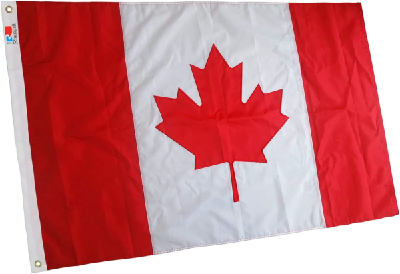Mark Carney, Canada’s two-week-old prime minister, stood before a microphone and lit a match. With a single, pompous decree—“the old relationship with the United States is over”—his government didn’t just nudge a boundary; it torched a partnership that’s held North America steady for decades. This isn’t a knock on the factory workers in Windsor or the rig hands in Alberta, who’ve got no say in this fiasco. It’s a vivisection of a leadership so intoxicated by its own rhetoric it can’t see the cliff it’s sprinting toward. What unfolds now isn’t just a policy blunder—it’s a slow-motion disaster, and Carney’s crew is too smug to notice the fuse is already hissing.
The stakes are stark. Canada funnels 75% of its exports—$406 billion in 2024, per official tallies—southward, a lifeline of oil, autos, and timber that keeps its economy from flatlining. The U.S., in turn, pours $421 billion in investment northward, dwarfing every other player, while their shared border hums at $2.6 billion daily. Defense binds them tighter: NORAD’s radar has swept the skies since 1958, backed by a U.S. fleet of 1,900 jets to Canada’s 66 aging relics. Yet Carney’s administration, irked by Trump’s 25% auto tariffs, opts not for shrewd counterplay but for a grand, theatrical exit. This isn’t strategy—it’s a tantrum in a tailored suit, and the fallout won’t spare the innocent.
Those tariffs? A bruising hit, no doubt—125,000 auto jobs hang in the balance, with 400,000 more tied indirectly, says the industry’s own count. A deft government might’ve parried with duties on the $20 billion in U.S. coal Canada imports annually, or sat down to haggle. Instead, Carney’s team dubs the U.S. “unreliable” and flounces off, as if 40 million people with a $26.9 billion defense budget—1.38% of GDP—can shrug off a neighbor spending 33 times that to keep the continent secure. It’s not courage; it’s delusion, a middle finger to pragmatism from a regime that’s barely unpacked its briefcases.
The speech itself was a clinic in self-congratulation. “We are masters in our own home,” Carney proclaimed, voice thick with gravitas, as if sovereignty’s a magic wand. Masters of what? A nation tethered to a trade deficit—$28 billion last year—with its biggest buyer? This is the same Carney who steadied the Bank of England through Brexit’s chaos, a man who knows numbers don’t bend to bravado. Yet here he is, leading a government that’s traded math for melodrama, betting Canada’s 60% share of U.S. oil imports—4.3 million barrels daily—can be wished away. The people grinding out a living didn’t ask for this; their leaders thrust it upon them.
Timing sharpens the farce. Sworn in March 14, with a snap election looming April 28, Carney skips the obvious—say, a trip to Washington—and jets to Paris and London, chasing claps from capitals that take a measly 8% of Canada’s exports. The U.S. border alone outpaces that by a factor of 15, a daily artery Europe can’t dream of clogging. This isn’t vision; it’s a photo op for a wobbly administration, a Hail Mary to dodge accountability while the clock ticks. The wreckage won’t land on Ottawa’s mahogany desks—it’ll hit the streets, where citizens are left to mop up.
The Overlooked Lifelines
Carney’s government seems oblivious to what’s at stake. Energy’s a glaring case: Alberta’s oil sands, 20% of GDP, ship most of their crude south, while Canada leans on reciprocal flows for 83% of its energy exports. Snap that cord, and the pumps stutter. Defense is bleaker: those 66 CF-18s flew 72 joint intercepts with U.S. wings in 2024, a shield Canada can’t replicate solo. Even trade’s lopsided—U.S. firms like GM run 10 plants north of the border, employing 20,000, a thread Carney’s crew seems eager to snip. This isn’t a reset; it’s a rupture, and the cracks are already spidering.
The Unraveling Ahead
Here’s how it crumbles, a mess of the government’s own making. Trump, a brawler by nature, won’t blink—lumber ($15 billion yearly) or oil could face tariffs next, kneecapping Canada’s bottom line while Carney’s team scrambles for platitudes. Those U.S. plants? They’ll shift south or abroad, leaving workers—not ministers—scrambling for paychecks. The economy, already fragile, buckles under a Canadian dollar that’s taken a beating since 2020, when it hovered at 75 cents U.S.; it’ll sink lower now.
Isolation follows. Europe’s distracted—France with its riots, Britain with its Brexit hangover—offering little beyond nods. NATO, wary of a partner that can’t pull its weight, dials back trust, while China dangles $15 billion in trade from last year, a velvet noose for a desperate Ottawa. Borders tighten, maybe with a 10% security fee, and Canada’s government— not its people—faces the squeeze. The fallout’s not theoretical; it’s imminent, a bill coming due faster than they think.
By April 28, the electorate—pinched, jobless, disillusioned—will see through the bluster. Carney’s administration, a flash of hubris barely two months old, could dissolve in a ballot-box reckoning, leaving successors to claw back from the brink. The nation’s fabric doesn’t deserve this fraying; its leadership stitched the tear.
Mark Carney and his cadre might fancy themselves architects of a bold new dawn, but they’re just novices toppling a house of cards. This partnership wasn’t theirs to trash—it was a shared scaffold, and they’ve kicked out the beams for a fleeting spotlight. The collapse is theirs to own, a lesson in overreach that’ll echo long after the applause fades.
Source: https://theconservativeweekly.substack.com/p/ottawa-chose-empty-bluster-over-stable
Story imported via RSS from The Conservative Weekly
RSS Article Source: https://theconservativeweekly.substack.com/p/ottawa-chose-empty-bluster-over-stable


